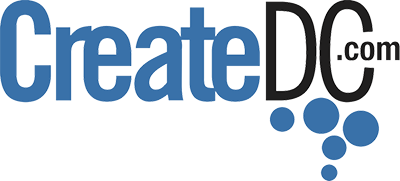Three Keys to Growth | Customer Loyalty
Customer Loyalty
Loyalty. It is what we want in all relationships, right? Client relationships are no different. When we consider the time, effort and overall cost to acquire a customer, one of the most important things we can do is to measure their loyalty on a regular basis. Introduced in 2006, by Fred Reichheld in his book “The Ultimate Question,” the Net Promoter Score (NPS) has become the de facto standard for measuring loyalty for the best companies in the world. Unfortunately, a vast majority of the companies either do not use NPS or do not use it as a closed-loop process. In this article, we will share three “must read” best practices that will help you grow your business through increased client retention, expansion and new client acquisition.
1. Make NPS an integral part of your culture
Customer loyalty is too important to be left to just sales or customer service. A subtle, but very important part of the Net Promoter Score, is that it is a measurement of the customer’s overall experience with your company—this is everything from sales, to customer service, to information technology to finance, to how you answer (or don’t answer) your phones. Every customer interaction is what we call a “moment of truth” by which the customer can form an opinion of us. You must be sure that everyone in your organization understands that while they may not be able to win a customer, they very well could cause the company to lose one. Every department impacts the customer experience, so it is very important to have each department have a complete understanding of what they can do to make sure they deliver their best at every single touch point.
2. Make a commitment to analyze the data
The best thing about NPS is you get one number that represents the sum total of your customer loyalty. That number will change over time depending on how your company is meeting your customer expectations. The best practice to analyze the data is by operating division and then by geography. You will see which leaders in your company have the most loyal and least loyal customers. Next, complete a financial segmentation to determine if strong loyalty scores correlate to higher profitability and vice-a-versa. Our experience is that this exercise will be a real eye opener for you! Finally, tether client loyalty to client risk. Analyze the historical performance of low NPS scores with client defection. Once armed with that data, prioritize which customers to engage and how to engage them.
After completing the structuring and segmentation of the data, do a deep dive on all the comments with positive feedback or negative feedback. This allows you to easily identify patterns, if any exist, amongst your detractors for any positive comments they happen to make, or similar challenges your promoters raise. You can also get a quick summary of the most common issues overall or by segment.
3. Take action!
After you have made customer loyalty everyone’s responsibility and analyzed the data, the time to take action is now! This is the area we have found to be the biggest opportunity for our clients Most clients have the survey completed by a third party, review the data and do not have a closed-looped system of reinforcing activities to ensure their insights are actionable. We recommend that NPS is directly linked to the tasks in your CRM system and that you take the following actions to ensure higher client retention, additional cross-selling opportunities and increased new client acquisition.
If the customer rates you a “6” or below, they are considered a detractor. Detractors are actively speaking negatively about you. First, thank them for taking the survey and sharing their thoughts. Apologize and find out what your organization can do to make things right. If it is not too late, you will have an opportunity to fix things—MAKE SURE YOU DO WHAT YOU SAY YOU’RE GOING TO DO!!
If the customer rates you a “7” or “8” they are considered a passive. Passives are satisfied but highly susceptible to competitive threats. First, thank them for taking the time to respond to the survey and then ask them what it would take for them to rate you a “9” or a “10.” Again, most customers will tell you if you thank them and ask the question.
If the customer rates you a “9” or a “10” they are considered a promoter—they are actively promoting you and your company. If possible, take the time to meet with the customer, thank them for their survey response and ask them for a reference for another or a referral within the company to another key decision maker. Remember, salespeople get paid to say how good their company is, customer’s do not! A customer reference or referral has the ability to open doors and break down barriers.
At Butler Street, we introduced Net Promoter Score to the staffing industry at the 2007 SIA national conference and have been using it ever since. We are believers that it is the greatest predictor of future revenue and client retention.
Butler use thsiButler Street, a leading management consulting, training and research firm focused on client and talent development, has formed an alliance with Printing Impressions, America’s most influential and widely read resource for the printing industry, to provide the de facto industry standard for measuring customer loyalty through its Best of Print & Digital Customer Survey.
If you are interested in understanding how Net Promoter Score and the Best of Print and Digital can help you grow your business, go to www.bestofprintanddigital.com
Click here to watch the Printing Impressions interview with Mike Jacoutot, founder of Butler Street, and Mark Subers, president of Printing, Packaging and Publishing at NAPCO Media, as they discuss the new partnership program.

There are no comments